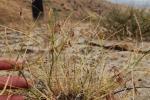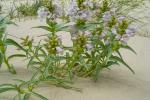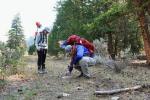Science
Most Recent Stories
- Smokey Bear joins Mr. & Mrs. Claus to continue LTVA annual toy giveaway
- Take a First Day Hike on Your Public Lands
- BLM Fire Team brings Smokey Bear to Kingman’s Street of Lights
- Nine years of partnership pays off: Fitzhugh Creek Meadow restoration achieves dramatic results
- Rural wildland firefighting partners grateful for BLM gift






